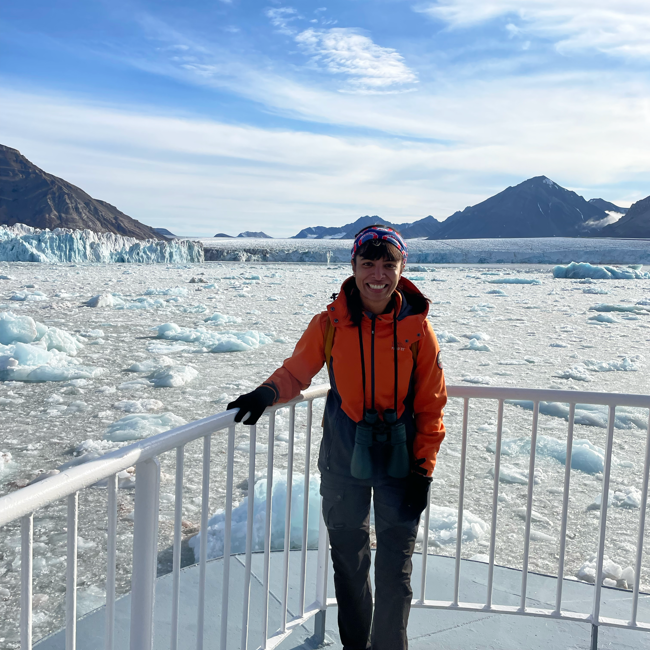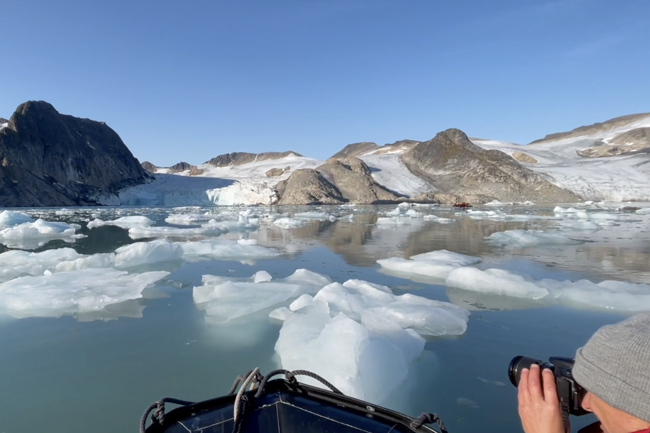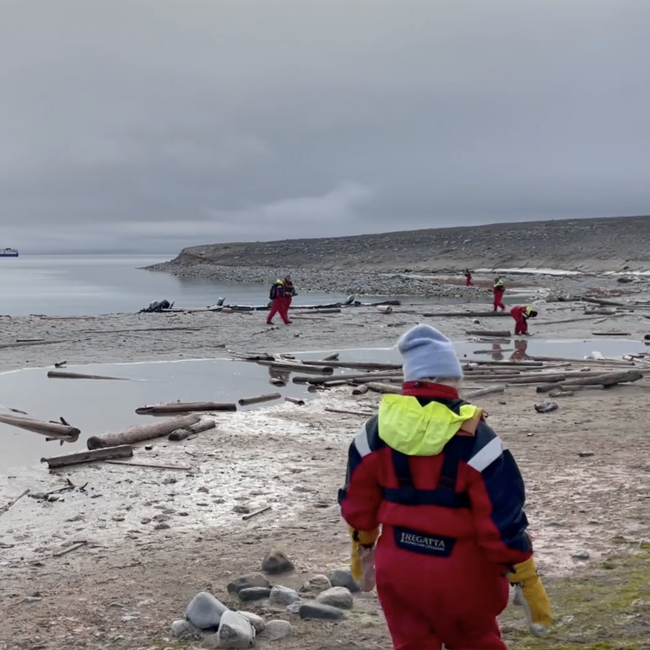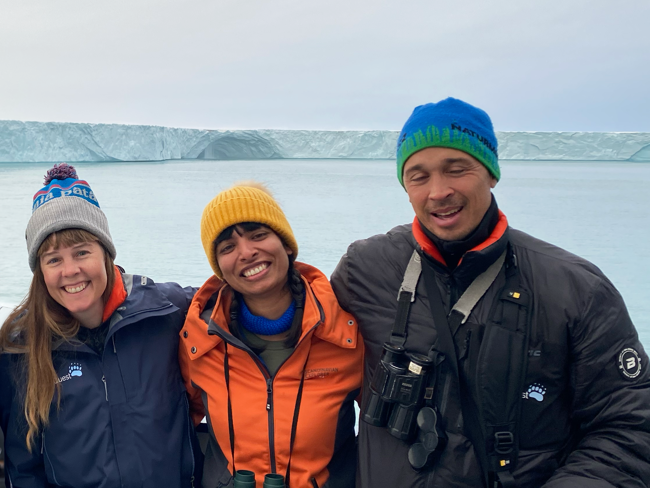Every year, PolarQuest offers a free berth to an individual whose work contributes to a more sustainable planet. In 2023, researcher and student Shradha Agarwal had the opportunity to join one of our expeditions in Svalbard, where she focused on studying the behavioural changes of Arctic tourists as a result of first-hand experiences in these fragile environments.
As part of the program, the group took part in Clean up Svalbard activities. In her film, Shradha shares some of her experiences from the trip — which she describes as something straight out of a nature documentary — and reflects on how it affected both her and the other participants by raising environmental awareness. In this blog post, you can watch the film and read an interview with Shradha.
You are really present in the moment, you slow down and notice little things. I got the polar bug, what can I say.
How did you hear about PolarQuest’s Giving Back project?
– I was reaching out to various polar expedition cruise companies, as well as people working in polar regions, for my research – through emails, Facebook groups, and social settings. That’s when I met a woman who had previously worked as a guide with PolarQuest. She suggested getting in touch with their office, as they might be able to help me find interview contacts for my research.
They then asked if I’d be interested in applying for the ‘Giving Back’ project at PolarQuest. If accepted, I would have the opportunity to conduct my research on board one of their expeditions – and, of course, I went for it!
Was this your first time going to the Arctic?
– Previously, I had been to places like Nordskot, Bodø, and Træna in Norway, all of which are north of the Arctic Circle. But this was my first time going this far north – and especially to a place that truly resembles the image of the Arctic in the public imagination.


Could you briefly describe what your study is about?
– Rapidly growing tourism is a major concern among both polar researchers and the polar tourism industry. While we may not always be able to reduce or control the negative impacts of tourism, it's important to explore how polar tourism can also be beneficial – that is, the potential positive outcomes.
Through my study, I explored how educational programs on board expedition cruises in polar regions can serve as an effective tool to enhance the positive impacts of polar tourism. I looked at how, and to what extent, these programs are effective in encouraging pro-environmental behaviour among tourists.
I was glad to hear that at least some, if not all, of my participants started making these small lifestyle changes after arriving back home. Having experienced it first-hand really hits home.
Clean up Svalbard was part of the project. Would you like to tell us a bit about that? How did the participants respond?
Yeah, so Clean up Svalbard was the Citizen Science program we decided to implement during our voyage. It was interesting because some of the tourists I spoke with were really enthusiastic about the cleanup from the start, while others weren’t as keen—probably because they didn’t expect to see so much trash in such a remote part of the world.
The first time we had the chance to do it was at Bruceneset, where we found a large fishing net and loads of other litter, including microplastics. Later, at Phippsøya beach, the fishing nets were so close to a walrus colony that we didn’t approach the site out of respect for wildlife safety and security guidelines.
That day, I remember, almost everyone on board wanted to help clean up. It was truly inspiring!


Did you get the results you expected from your study, or was there something that surprised you?
– I’d say there were some surprising elements. There was a noticeable increase in awareness among the tourists, but the minor behaviour changes they reported in the post-voyage interviews definitely need further investigation. That’s actually one part of my current PhD research—studying long-term behavioural changes in polar tourists.
I also noticed that both the level of awareness and the types of behaviour (existing and changed) varied from person to person, depending on their background.
How important do you think it is for understanding to see an environment like this with your own eyes?
– In my opinion, experiencing these kinds of environments is certainly not a conclusive factor in raising awareness or encouraging pro-environmental behaviour. Many tourists visit these regions, take photos, make TikToks and Instagram reels, then return home and carry on with life as if nothing has changed.
Plus, only a small minority of people can actually afford to travel to the polar regions, so there’s a clear issue of affordability and accessibility. That’s why researchers are now also exploring how impactful Virtual Reality (VR) tourism might be in creating similar experiences and effects as physical travel to the poles.
That said, I do believe that for some people, being in these environments can be truly surreal and even life-changing — in ways that ripple into their future lives and influence those around them. That’s where the complexity lies: long-term behavioural change is shaped by a mix of factors like economic capacity, sociocultural background, and personal experience.


What is your most important takeaway or conclusion from this study?
– I’d say my most important takeaway was understanding and accepting that behaviour change isn’t universal. Even when tourists share such an extreme and immersive experience during a voyage, their individual responses — how they interpret and internalise those experiences — can vary greatly.
I also believe that while short-term studies of behavioural change can provide a useful baseline, it’s through longitudinal research that we can gain real insight into how these changes play out over time in the real world.



